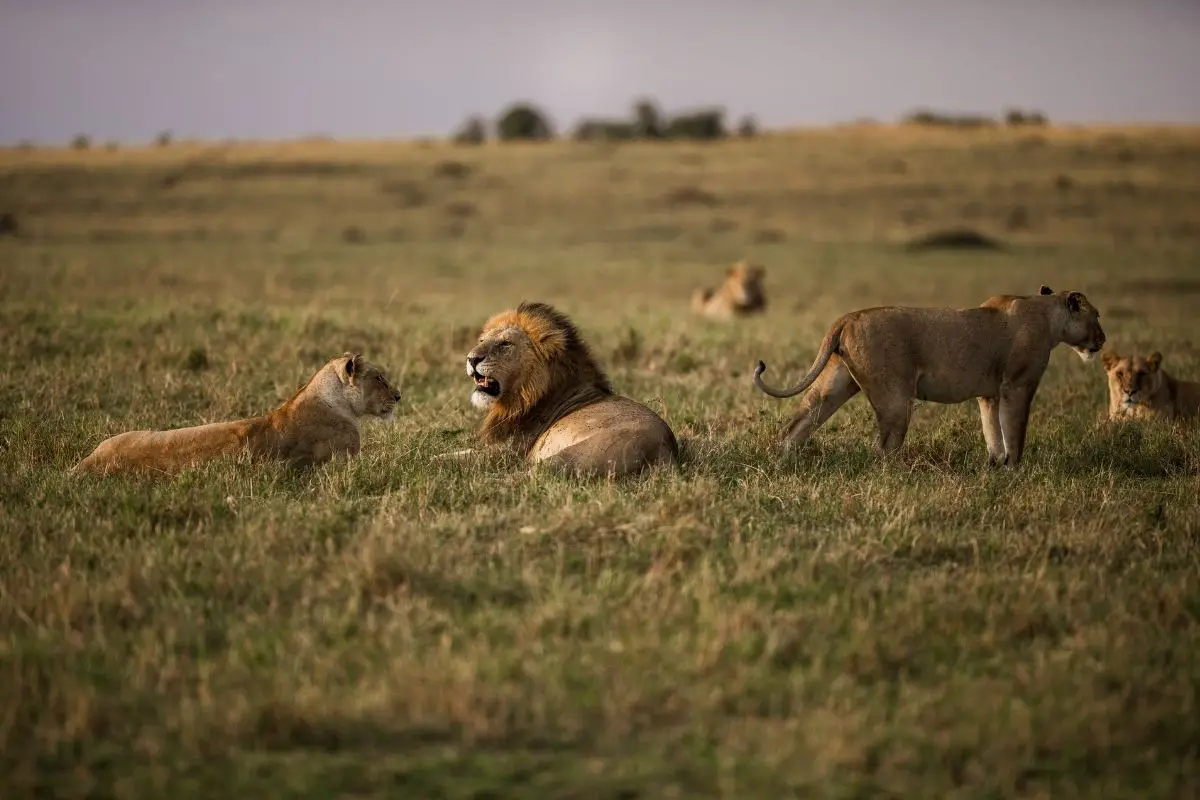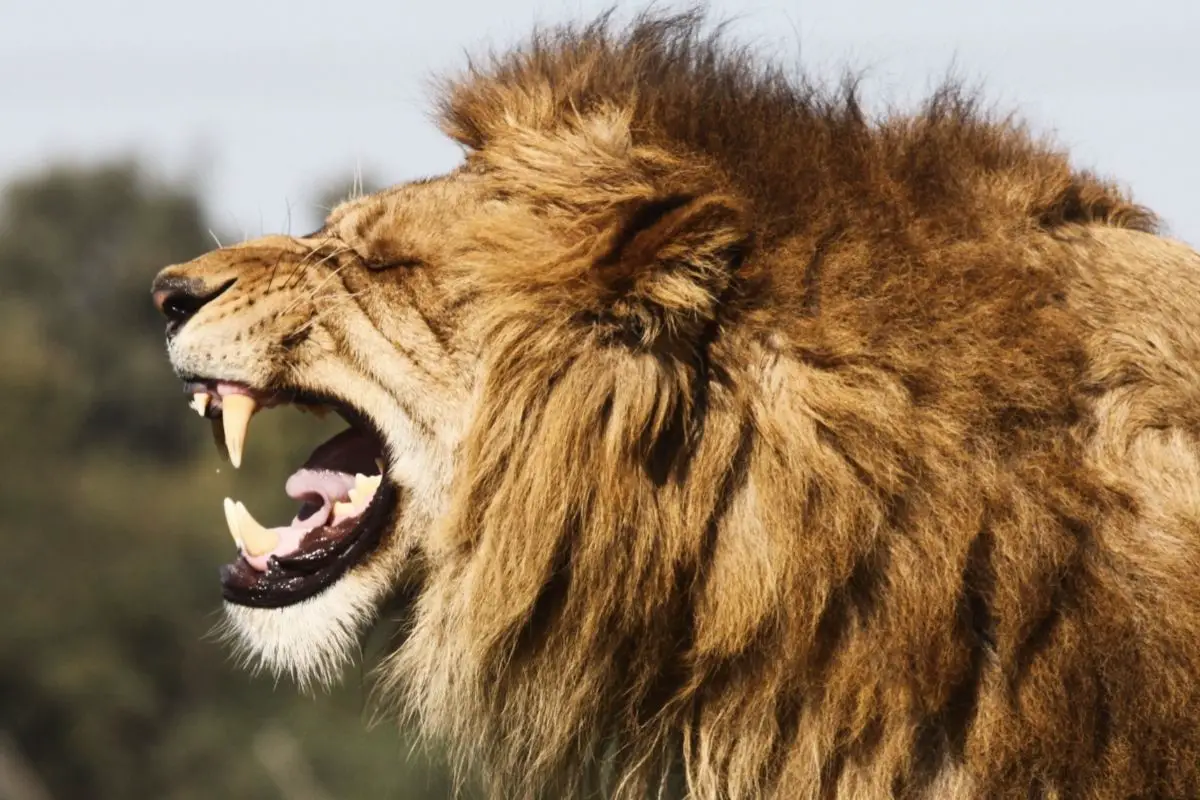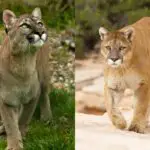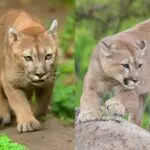Mountain lions are large cats that are found all around the Americas. Their range starts in southern Canada and goes all the way down to Argentina and Chile!
Because of this, their diets can be extremely varied, depending on what prey is available in that area!
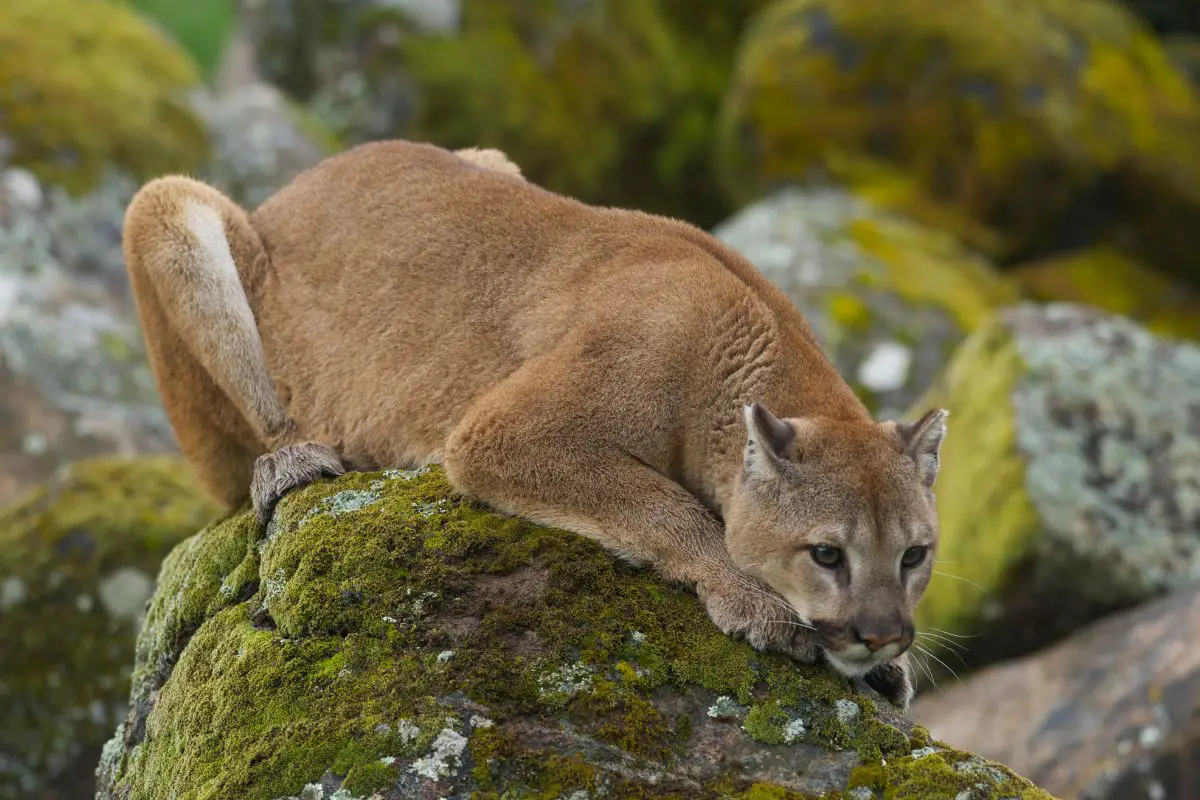
Most mountain lions will prey on medium-sized animals such as deer or vicuña, but they aren’t afraid to take on other things, too.
To find out more about what mountain lions will eat, just keep reading! We’re going to cover everything you need to know to impress all your friends.
Overview Of The Mountain Lion’s Diet
Mountain lions are obligate carnivores, like all other cats. This means that they can only get the nutrients they need from their prey or other meat sources instead of vegetation.
However, this doesn’t mean that they can’t eat other food types. If they did, they would only eat it for the taste rather than the nutritional value it would offer them.
These animals are excellent hunters, and have been known to prey on anything from deer and elk to mice and birds.
Depending on where the mountain lion lives, their diet can vary a lot!
However, all mountain lions are stalking animals, and will lie in wait for prey to get close enough before pouncing and killing.
To kill their prey, a mountain lion will deliver a lethal bite to the animal’s spinal cord.
This way of killing is pretty unique to the mountain lion, as the majority of cats kill their prey by suffocating it.
Suffocation is usually done by clamping down on the throat of an animal to prevent airflow.
Other cats, like jaguars, are known to kill their prey by delivering a bite to the back of the skull to kill their prey instantly.
When a mountain lion has caught their prey, they will often try to “cache” it. This involves hiding the carcass of the animal beneath twigs and leaves to hide it away from other predators.
This method doesn’t always work, though, as animals like coyotes are great scavengers and will often find the hidden carcass.
How Much Do Mountain Lions Need To Eat?
Mountain lions can eat up to 30 pounds of meat in one sitting.
Their average mountain lion will eat between 20-30 lbs, whereas humans will typically only eat a maximum of 4 lbs in one day!
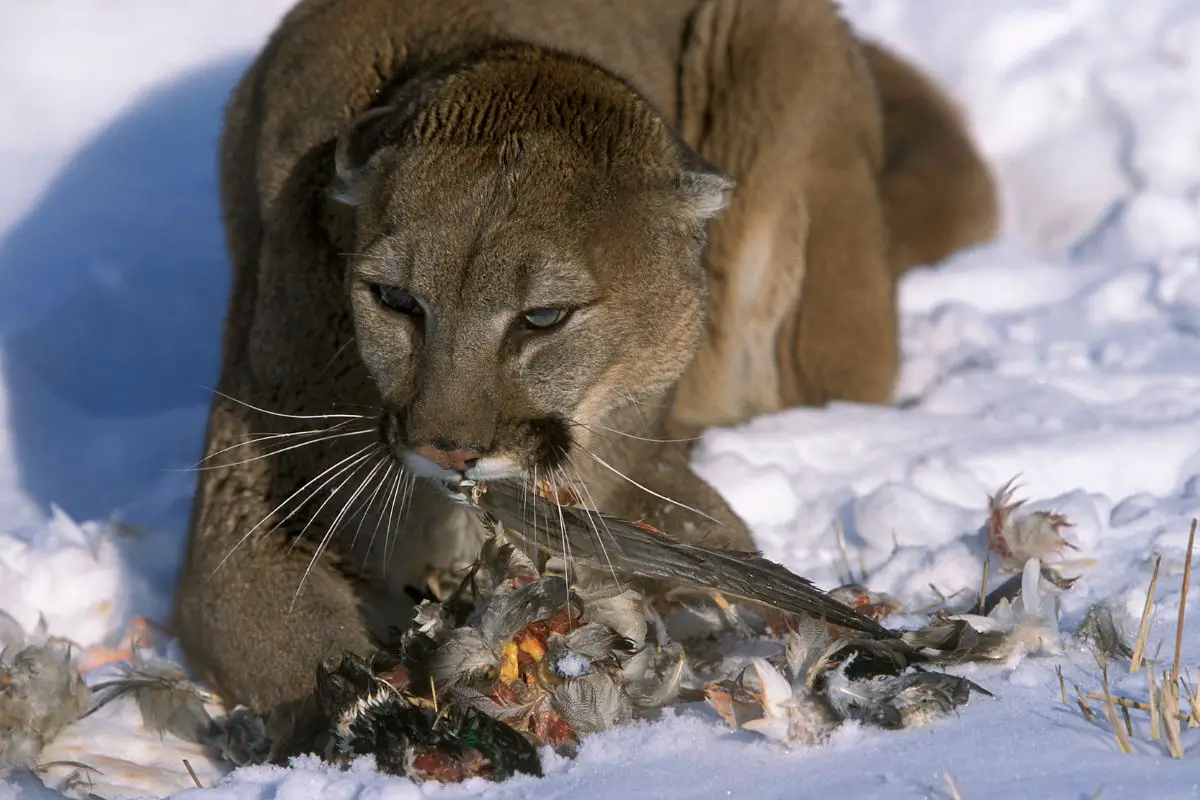
These animals aren’t picky, and they don’t always stick to fresh kills and carcasses.
Although they aren’t notorious scavengers like other species, they won’t stick their nose up at a week-old carcass.
This is especially the case if they are the ones who caught it and “cached” it! Some mountain lions have been known to feed off the same cached carcass for up to two weeks.
While these animals are pretty good hunters, they don’t always bring home the venison.
There are often times when one of these cats will have to go for smaller prey like rabbits to satiate their hunger.
The Case Study Of Brokenleg The Mountain Lion
One of the mountain lions that the Santa Ana Department of Natural Resources tracked was Brokenleg.
For 21 months, Brokenleg was tracked and monitored to see what he would eat over the course of that time. At the end of the 21 months, some interesting information came up!
While it’s thought that the majority of mountain lions predominantly feed on mule deer, this wasn’t the case for Brokenleg.
During the time he was surveyed, Brokenleg ate the following animals:
- 35 badgers
- 19 elk
- 15 coyotes
- 10 beavers
- 6 raccoons
- 5 mule deer
- 4 porcupines
- 2 pronghorns
- 2 domesticated dogs
- 1 rabbit
- 1 mountain sheep
Such a high badger and elk count wasn’t expected, and certainly came as a surprise. Only 5 mule deer in almost two years isn’t nearly as much as you would expect from such an apex predator.
This information just shows how varied the diets of mountain lions can be in a single area – imagine what they must eat across the Americas!
What Do Mountain Lions Eat?
Below is a list of animals that mountain lions eat:
- Elk – large deer
- Foxes – small omnivorous mammals
- Coyotes – small-medium canids
- Red deer – large deer
- White-tailed deer – medium-sized deer
- Caribou – medium-sized deer
- Mule deer – medium-sized deer
- North American bison – large bovines
- Black bears – medium-sized bears
- Mountain goats – medium-sized goats
- Bighorn sheep – medium-sized sheep
- Domestic dogs – various sized dogs kept as pets
- Wild horses – large mammals
- Moose – only the young or elderly, the largest species of the deer family
- Cattle – large bovines
- Raccoons – small mammals with ringed tails
- Bobcat – medium-sized wild cat
- Beavers – medium-sized rodent
- Rodents – rats, mice, and other similar rodents
- Birds – various birds
- Sloths – small and medium-sized tree dwelling mammals
- Hares – various hares
- Pronghorns – medium-sized antelope
- Fish – various fish
- Amphibians – various amphibians
- Lizards – various lizards
- Spectacled bear cubs – the offspring of spectacled bears
- Marmot – large ground-dwelling squirrel
- Skunks – small striped animals
- Badgers – medium-sized burrowing mammal
- Groundhogs – small rodent
- Lynx – medium-sized wild cat
- Guanaco – medium-sized camelid
- Vicuña – medium-sized camelid
What Do Mountain Lion Cubs Eat?
Mountain lion cubs, like all mammals, start off by drinking milk from their mother. Around the 7-week mark, cubs start to wean and may begin to eat solid food that their mother brings to them.
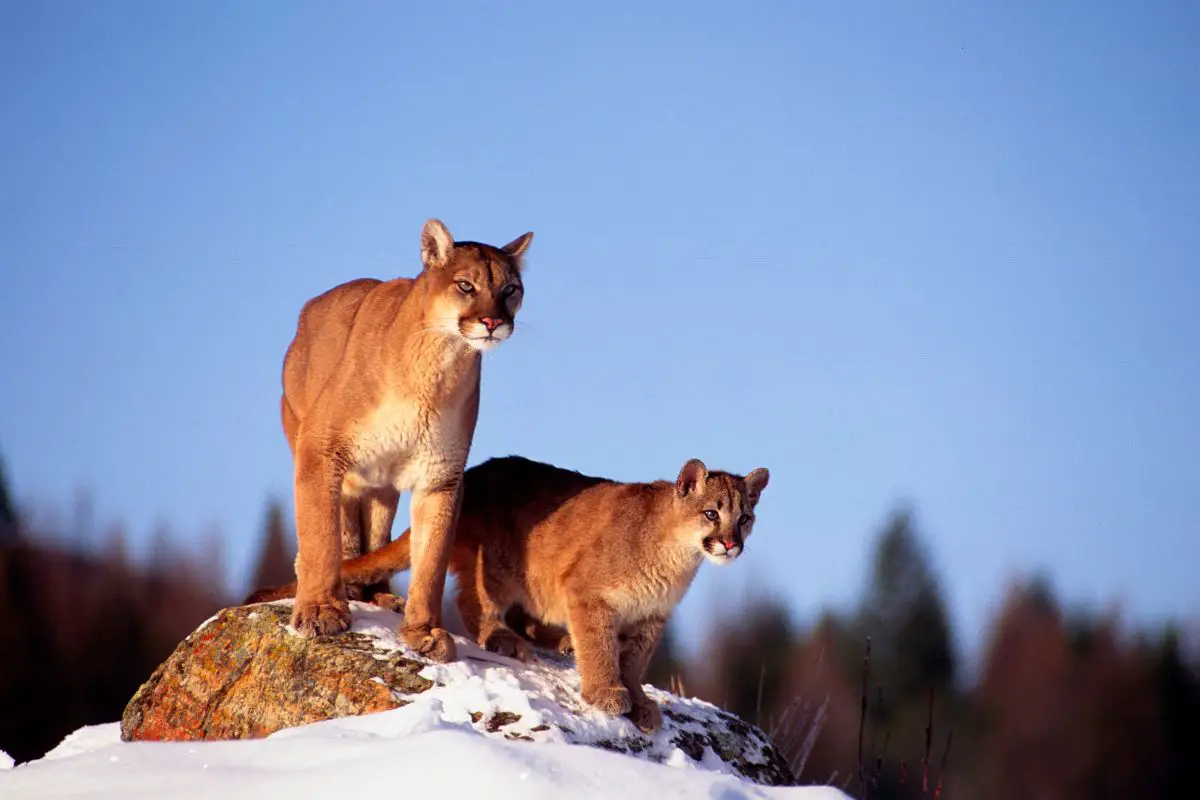
From this time, the mother will begin bringing the cubs food to eat, and over time they will completely wean and only eat solid food. This will be around the 6-month mark.
At this time, cubs will start learning to hunt for themselves. They will start with small prey, such as skunks, rabbits, or other small creatures.
This is often done with the help of their mother until they become adept hunters themselves.
As they get stronger and become more capable hunters, they will go after larger prey.
Are Humans At Risk of Becoming A Mountain Lion’s Next Meal?
Generally speaking, no. Mountain lions very rarely target humans as their lunch and much prefer to keep their distance.
However, there have been cases of people, especially children, falling prey to these animals.
This is incredibly rare and has only happened a few times, but it is still something to be aware of.
In the whole of North America, there are thought to only have been 27 or so cougar attacks that have ended in deaths in the last 100 years.
There have been around 130 attacks in that time.
As you can see from the numbers, it is extremely rare for cougar attacks to occur, and even rarer for them to be fatal.
Not only that, but the number of attacks seems to be dropping as time goes on, a sign that these animals are likely being pushed further and further from their natural habitats.
The majority of reported attacks, some of which may be false, have been on children.
This is especially the case when it comes to fatal attacks, as many victims have been between the ages of 3-13. Some states, like Oregon, only reported their first ever fatal cougar attack in 2018.
Protecting Yourself Against Mountain Lions
If you are going out into an area where there are mountain lions, it is crucial for you to protect yourself.
Carrying bear spray or pepper spray works wonderfully in these scenarios and should always be in reach.
However, while these are both effective tools if you can see that a mountain lion is coming, they may not always work.
These animals are known for their stalking ability, and you may never see one until it is literally on top of you.
Because of this, it is crucial for you to always be aware of your surroundings and never jog with earbuds in. That is the perfect way to allow something – human or animal – to sneak up on you and catch you unawares.
If you do find yourself face-to-face with a mountain lion, there are some important things for you to remember:
- Make yourself look as big as possible
- Be loud
- Don’t turn your back
- Don’t antagonize or corner the animal
Trekking poles should be lifted over your head to appear as big as possible. That should deter the animal and make them realize that you would be too much work.
If you are attacked, it’s important to fight back. You can use anything from a pen to a knife, rock or stick to do this, and aim for the animal’s eyes.
If you have bear spray or pepper spray to use accurately, then this could also save you or your companion’s life.
Doing outdoor activities with a partner is always advised, even if you don’t live in an area known for cougars.
There are plenty of other dangers, and many of them walk on two legs instead of four.
Having a partner with you will not only act as a deterrent, but it also gives you a better chance of fighting off an attack.
Never bend down to pick up a rock or something else to throw if it puts you in a vulnerable position.
You should also try to remain standing, or else the cougar will have the advantage of being able to use all four legs to be stronger.
Preventing A Mountain Lion Attack
Chances are, you will start to see signs of cougars in the area as soon as you learn what you should be looking for.
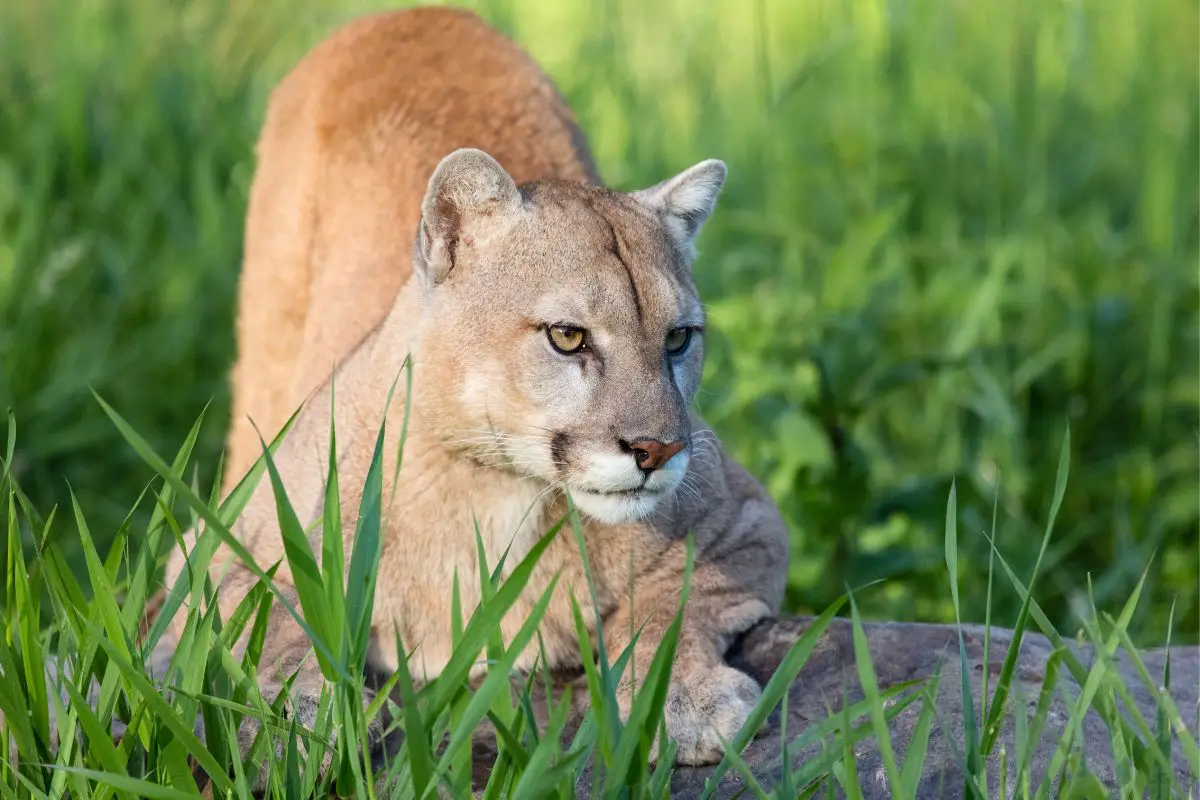
You should also pay close attention to the rangers and all signs that are in place.
Too often, people ignore the signs and walk straight into a cougar den.
If you notice the signs of a mountain lion while out, you should prepare yourself for an attack. Get your trekking poles out so that you can use them, and ready your bear or pepper spray.
Be extremely alert to every single thing around you and make a lot of noise to deter the animal.
Here is a list of things that you should look out for while on a trail:
- Perfect cougar prey – seeing any kind of animal that would be ideal for a cougar to prey on (sheep, deer, or anything similar are perfect for cougars).
- Animal carcasses in the area – seeing animal carcasses, whether they are old or fresh. Mountain lions will happily chow down on a carcass they find, and it doesn’t matter if they killed it or not. They are opportunistic, and the smell of the carcass could easily attract them.
- Mountain lion feces – seeing mountain lion feces or scat is a surefire sign that there are mountain lions in the area. This might be difficult to recognize, but it often has hair in it. Other than that, it looks relatively similar to human feces. If the scat is moist and warm, then you could be in danger. If it is old and dry, you could still be in danger.
- Cougar tracks – seeing cougar tracks in the area is another worrying sign that you could be in danger. Like with the feces, whether the tracks are old or new, you could still be in danger. There could be more tracks in the area that you just can’t see. If the tracks you see are fresh, then it’s time to get the trekking rods and bear spray out.
Even when resting, be very careful. The smaller the target, the easier they are to kill. Always make yourself look big and strong, even when resting, and you are less likely to be attacked.
One of the scariest aspects of cougar attacks is that they prefer smaller targets. As such, your pets and children will always be their go-to on the trail.
ALWAYS keep your children and animals close to you. There have been several attacks where children have died because they walked ahead of their parents on the trail.
Final Thoughts
Mountain lions aren’t picky eaters, and they will settle for anything that’s just about the right size for them. From rodents to deer, their diet is extremely varied.
Their location dictated their diet greatly, and cats in South America will prey on guacano, and even alligators if they’re feeling up for it!
- Sink Your Teeth Into This: Analyzing the Powerful Lion Bite Force - September 8, 2023
- Siberian Tigers: Everything You Need To Know - September 4, 2023
- Do Lions Eat Humans? Understanding Lion Aggression and Risks - September 4, 2023


